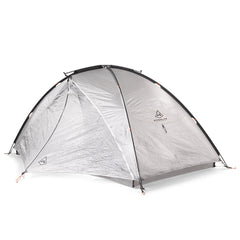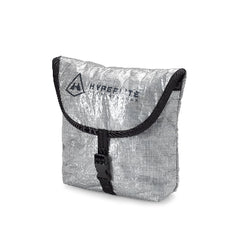Words & Photos by Tina Haver Currin
Long-distance hiking is all about blood and guts, exposure, and pain. It’s about falling asleep with the sun, drinking beer for breakfast, and proudly knocking back snacks so dense they’re explicitly labeled “not a low-calorie food.” It’s about listening to all fourteen hours of 50 Shades of Grey on audiobook and not feeling guilty about it. It’s about risk—risking your health and stability to join a secret society devoted to nanoscopic progress in the face of deep fatigue, potential illness, and probable injury. For some of us, it’s about re-learning how to be married (or, at least, how not to get divorced.) Wilderness—and our long walk through it—offers a refuge for people who refuse to live in the hermetically sealed bubble of suburban life, and that can be hard on any relationship.
When my husband, Grayson, and I first started hiking, we exuded ineptitude. But thanks to the power of persistence (and the internet!), we’ve managed to learn a few things. These days, we live in a secluded pocket of the Appalachian Mountains without trash or road service but adjacent to a wide swath of National Forest. We’re both lucky enough to write about the outdoors—he, for the likes of Outside, me, for the National Park Service—and to hike and climb and run more often than not.

We’ve spent a good chunk of our time together exploring more than 200 national park units across the country, bouncing down dirt roads and tumbling through Arctic tundra, and riding the occasional merchant vessel to make it happen. In 2019, we thru-hiked the Appalachian Trail, sweating our way through the thick Southern heat and skipping across fields full of rocks; this year, we nabbed a permit to tackle the rugged and fire-wracked Pacific Crest Trail. We’ve done a lot of weird things and slept in a lot of weird places together.
And, with spring just around the corner, it’s time to dive back into the gear closet and start preparing for the next big adventure. Throughout the next few months—and as much as I can muster while on trail—I’ll share some things I’ve learned along the way, from how to deal with different styles and paces on a shared trip to how to pick a shelter for two. What kinds of gear swaps did I make for the PCT vs. the AT? How’s my husband’s broken body doing? Have we had any dramatic fights? What’s it like to hike through some of the nation’s most pristine wilderness when half of the country has suddenly discovered the great outdoors? How do we all play this cool?

One of the great things about hiking is that most anyone can do it. On the Appalachian Trail, I hiked with a 72-year-old man who could house a quart of ice cream in fifteen minutes flat and a 17-year-old girl who had never traveled much beyond her rural Wyoming homestead. I got drunk with a rocket scientist and was totally spooked by a salamander biologist (the search for specimens requires poking around shelters long after dark, it seems.) This exciting, sometimes messy, confluence of people, personalities, and preferences makes long-distance trails the perfect space for couples. No one is normal, and no one way is right.
In this series of posts, I’ll explore all things coupledom, including the fun ways that our bodies try to challenge and embarrass us when we’re sharing space with someone else, some good choices for folks who want to divide gear and cook multiple meals at once, the politics of who carries what, and how these kinds of conversations and experiences affect our deepest and most intimate relationships. Tents, food, fuel, prep: let’s talk about maximizing the utility of togetherness.

Tina Haver Currin is writer, activist, and outdoors enthusiast based in North Carolina. From 2016 - 2018, she lived in a Sprinter with her husband, two cats, and a dog, climbing as many mountains, running as many trails, and seeing as many National Parks as humanely possible. Whether climbing in the Rockies, bushwhacking through Arctic backcountry, hiking deep within the Grand Canyon — or, most recently, thru-hiking the Appalachian and Pacific Crest Trails— she discovered the variety of experiences one can have in our wild spaces and the joy of sharing what she has learned with others. Tina currently spends her time writing, hiking, eating, and working as a ranger in the Blue Ridge Mountains.























